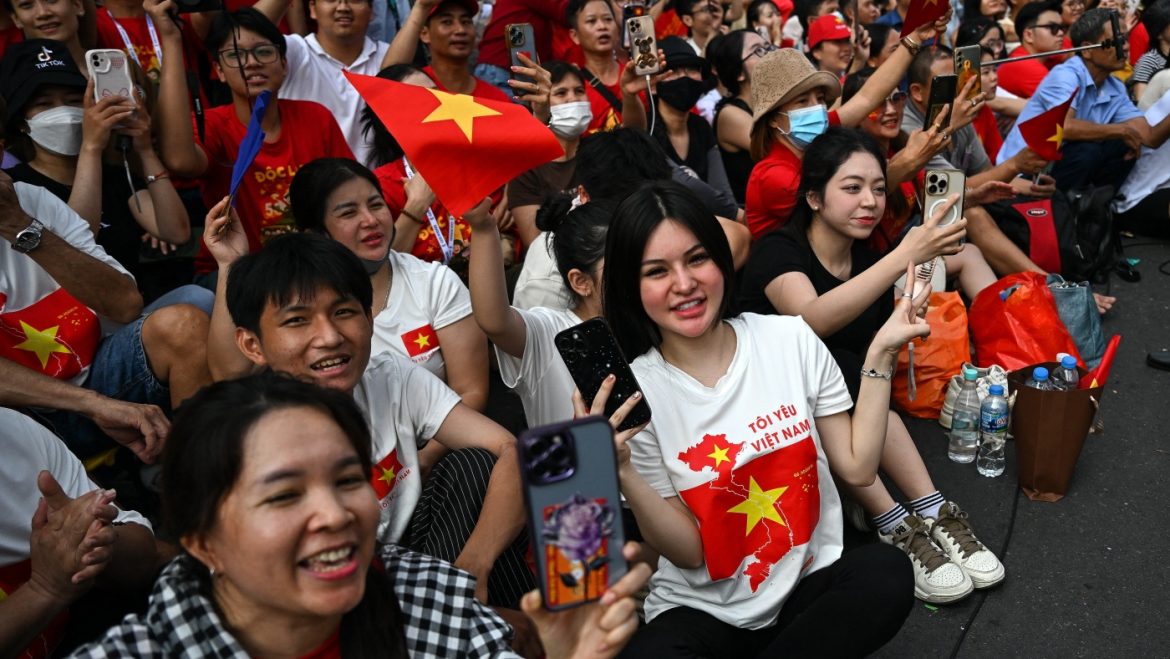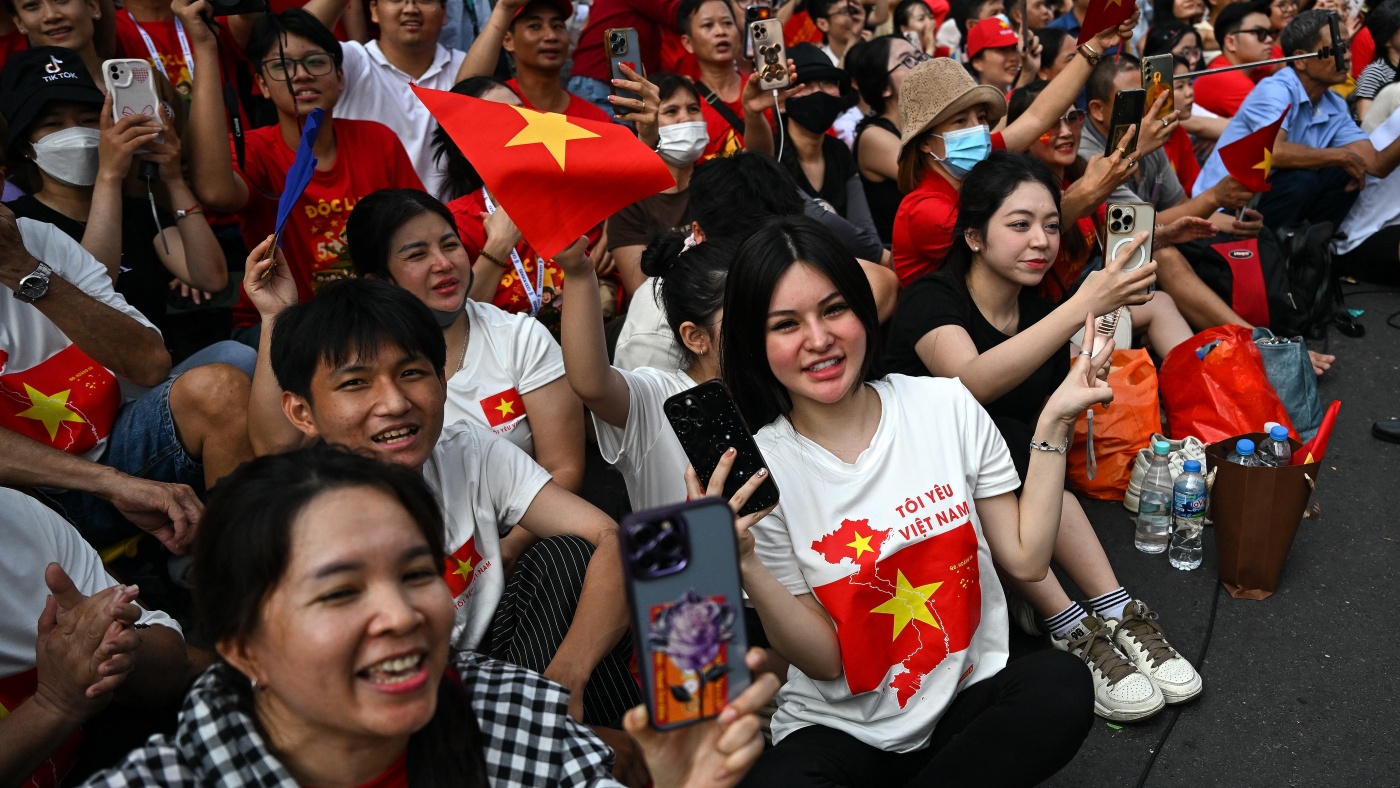Vietnam’s 50th Anniversary of the End of the Vietnam War: A Focus on Unity and National Pride
Introduction
On April 30, 2025, Vietnam commemorated a significant milestone—50 years since the end of the Vietnam War. This anniversary marked not just a historical event but a moment of national reflection, unity, and pride. The month-long preparations leading up to this date were meticulously planned, culminating in a grand celebration that underscored the country’s resilience and progress. This report delves into the significance of this anniversary, the events that marked the celebration, and the broader implications for Vietnam’s future.
The Historical Context
The Vietnam War, which lasted from 1955 to 1975, was a pivotal period in the country’s history. The war ended on April 30, 1975, with the fall of Saigon, marking the reunification of Vietnam under communist rule. This date is not just a historical marker but a symbol of the nation’s struggle for independence and unity. The 50th anniversary celebrations were designed to honor the sacrifices made during the war and to celebrate the achievements of the past five decades.
Month-Long Preparations
The preparations for the 50th anniversary were extensive and involved various sectors of society. The government, along with local communities, organized a series of events and activities to commemorate the occasion. These preparations included cultural performances, exhibitions, and educational programs aimed at educating the younger generation about the war and its significance.
Cultural Performances
One of the highlights of the celebrations was the cultural performances that showcased Vietnam’s rich heritage. Traditional dances, music, and theater performances were staged across the country, drawing large crowds. These performances not only entertained but also served as a reminder of the cultural resilience that sustained the nation through the war.
Exhibitions and Museums
Exhibitions and museums played a crucial role in the commemorations. Special exhibits were set up in major cities, displaying artifacts, photographs, and documents from the war era. These exhibits provided a visual and tangible connection to the past, allowing visitors to gain a deeper understanding of the war’s impact on the country and its people.
Educational Programs
Educational programs were a key component of the celebrations. Schools and universities organized lectures, seminars, and workshops to discuss the historical and contemporary significance of the war. These programs aimed to foster a sense of national pride and unity among the younger generation, ensuring that the lessons of the past are not forgotten.
The Grand Celebration
The culmination of the month-long preparations was the grand celebration on April 30. This day was marked by a military parade, speeches from government officials, and cultural performances. The parade, in particular, was a spectacle of national pride, featuring soldiers, military vehicles, and aircraft. It was a powerful display of Vietnam’s military strength and technological advancements.
Military Parade
The military parade was a highlight of the celebrations, with thousands of soldiers marching in unison, showcasing the country’s military prowess. The parade included a variety of military equipment, from tanks and artillery to advanced aircraft. This display was not just a show of force but a testament to Vietnam’s progress in defense technology and its commitment to national security.
Speeches and Addresses
Government officials, including the President and Prime Minister, delivered speeches that emphasized the importance of unity and national pride. They highlighted the sacrifices made by the people during the war and the progress achieved in the past five decades. These speeches served as a call to action for the nation to continue building a prosperous and united Vietnam.
Cultural Performances
The grand celebration also featured a series of cultural performances that showcased the diversity and richness of Vietnam’s cultural heritage. Traditional dances, music, and theater performances were staged, drawing large crowds. These performances were a reminder of the cultural resilience that sustained the nation through the war and continues to be a source of pride and identity.
The Broader Implications
The 50th anniversary celebrations had broader implications for Vietnam’s future. They served as a reminder of the nation’s resilience and progress, and they underscored the importance of unity and national pride. The celebrations also highlighted the need for continued efforts in education, cultural preservation, and national defense.
Education and Cultural Preservation
The educational programs and cultural performances organized during the celebrations emphasized the importance of preserving Vietnam’s cultural heritage. These efforts are crucial for ensuring that future generations understand and appreciate the nation’s history and cultural diversity. Education plays a vital role in this process, as it helps to instill a sense of national pride and unity among the younger generation.
National Defense and Security
The military parade and speeches by government officials highlighted the importance of national defense and security. Vietnam’s progress in defense technology and military strength is a testament to the nation’s commitment to protecting its sovereignty and ensuring the safety of its people. The celebrations served as a reminder of the need for continued investment in national defense and security.
Unity and National Pride
The 50th anniversary celebrations underscored the importance of unity and national pride. The events and activities organized during the month-long preparations and the grand celebration were designed to foster a sense of unity among the people. This sense of unity is crucial for building a prosperous and united Vietnam, capable of overcoming any challenges that may arise.
Conclusion: A Look to the Future
Embracing the Past, Building the Future
As Vietnam commemorated the 50th anniversary of the end of the Vietnam War, it looked back on a history of struggle, resilience, and progress. The celebrations were a testament to the nation’s ability to overcome adversity and build a prosperous future. The focus on unity, national pride, and cultural preservation will continue to guide Vietnam as it strives to achieve greater heights in the years to come. The 50th anniversary celebrations were not just a commemoration of the past but a celebration of the present and a vision for the future. They served as a reminder that, despite the challenges faced, Vietnam has emerged stronger and more united, ready to embrace the opportunities that lie ahead. The nation’s journey from war to peace, from division to unity, is a testament to its resilience and determination. As Vietnam continues to build on its past achievements, it looks forward to a future filled with hope, progress, and prosperity.


